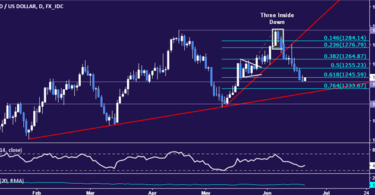Think the stock market is just for young people? Think again. You might have stopped working, but that doesn’t mean you should stop investing in stocks.
Experts generally recommend that investors dial down their exposure to stocks leading up to and during retirement. Unfortunately, some people go too far in protecting their nest egg from market declines.
“People I talk to between the ages of 50 and 90 are still uncomfortable having a bulk of their retirement investments in equities,” says Chris Bertelsen, chief investment officer of Aviance Capital Management in Sarasota, Florida.
But you can and should invest some of your savings in stocks after retirement to reap higher returns. Here’s how to purchase stocks and funds in a way that minimizes your risks.
Focus on diversification
Maintaining a well-diversified portfolio minimizes risk for investors of any age — even retirees. And that includes stock holdings, especially in the current market.
U.S. bond yields are still historically low, and those who are invested in them too heavily will miss out on the higher relative returns in equities, Bertelsen says.
One easy way to diversify is by investing in exchange-traded funds or mutual funds. These are composed of many different securities, so they’re inherently diversified, and allow you to broaden your portfolio’s exposure without buying all the components individually.
It’s important to remember that fees and performance vary among funds. And many investment scams target retirees. Steer clear of investments — stock-based or otherwise — promising returns that seem too good to be true.
Seek out dividends
Many retirees invest in companies that tend to pay a higher-than-average portion of their profits back to shareholders, also called a dividend.
Some ETFs and mutual funds cater to dividend strategies, but this is also an opportunity to have some fun with investing. Research stocks with high — or growing — dividend yields that meet some of your other criteria for investment.
Bertelsen recommends focusing on companies that are financially strong with a solid business for the foreseeable future. Prioritize low volatility stocks, those with prices that don’t swing wildly.
“People need to look to areas where the high level of excitement isn’t there, but the income surely is,” he says.
Reject fear
It’s all well and good to understand the best practices for investing in stocks, but it’s another thing to actually weather the market’s twists — especially in retirement.
Full story at NerdWallet






